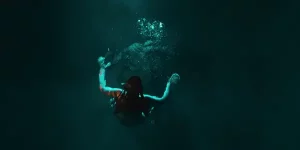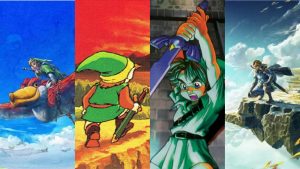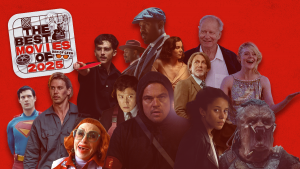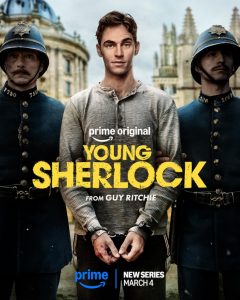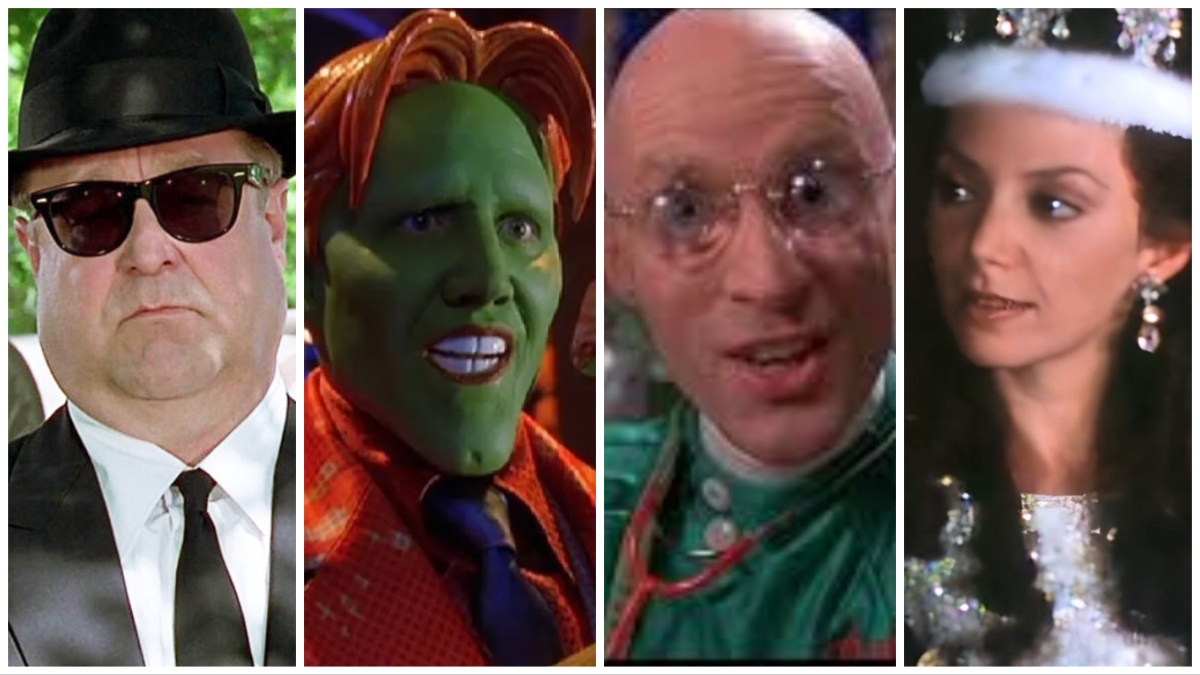
Despite what Hollywood wants us to believe, not every movie ever made needs a sequel. This did not stop the studios from trying their hardest to churn them out, leaving movie fans with only one solution: forget the sequel exists. It’s a useful technique, but, ironically, it doesn’t work on the worst films. We can say to each other, for example, that Highlander II: The Quickening never happened all we want. In our broken, battered souls though, we know it exists. And it sucks so much. The memory endures, like a cinematic kidney stone.
Trying to forget works best on sequels so middling, or cynically shoveled out that there’s not much for our memories to grab on to. If we do remember them, it’s with a befuddled “how the hell did that happen?” or a “they got A-list actors for that?” kind of awe. And then we forget about them again. Well, folks, strap in. We’re going to forcibly remind you that these gas station ham sandwich flicks actually exist in a bargain bin out. May you forget them again, quickly.
2010: The Year We Make Contact (1984)
It’s not that 2010: The Year We Make Contact is a terrible movie; it’s that compared to the masterful original that Stanley Kubrick and Arthur C. Clarke crafted, it’s just sort of there. With nice effects and a good cast—peep a young Helen Mirren and enjoy Roy Scheider as the recast Heywood Floyd, a minor but important character from the original film, it tells a fairly natural flowing story about what happens on Earth right after Bowman (Keir Dullea) turns into a space baby.
2010 features a signature Cold War era plotline where a plea for peace between world superpowers enjoys threats aplenty. Hanging over it all are the inscrutable efforts of the Monolith, which is now terraforming Jupiter. That’s… pretty much it. All anyone usually remembers is the Monolith’s sole message to humanity: All these worlds are yours, except Europa. Attempt no landing there.
S. Darko: A Donnie Darko Tale (2009)
Few directors squandered an audience’s goodwill as thoroughly as Richard Kelly, director of the cult classic sci-fi mind twister, Donnie Darko, and not much else. But one thing Kelly didn’t do was go out of his way to ruin his original hit. Yeah, the Director’s Cut is unnecessary, but it’s not S. Darko, and nothing about S. Darko is Kelly’s fault.
With a garbled plot, S. Darko tries to reuse as much from the original movie as possible. Daveigh Chase, returning as Samantha Darko, encounters dudes that look like Jake Gyllenhall around every corner, and that frickin’ nightmare rabbit gets new use. Annoyingly, Samantha rarely has any agency in the weird shit happening to her, unlike her brother. The twist that Samantha’s eccentric locale is related to the hep-to-time-travel old woman from Donnie Darko draws a sigh, not revelation. Bleh.
Son of the Mask (2005)
The first bad sign for Son of the Mask was that it took 11 years after the original film to come out. That’s an age gap so severe that Twitter teens would cancel it for being in an abusive, power-imbalanced relationship. The second bad sign was that Jim Carrey didn’t sign on. He learned how limp sequels could be from Ace Ventura: When Nature Calls and bailed. No word on how he managed to forget that for Dumb and Dumber To, though we expect the cash helped.
What sucks the most about Son of the Mask is that there’s the bones of something here. Alan Cumming is a fearless, funny actor, and his version of Loki, while no Tom-Hiddleston-in-black-leather, is pretty good. Okay, we lied, that’s all this movie has. Also we have a bland but coincidentally themed anecdote about the time we went to see Hiddleston on Broadway, and Alan Cumming was in the audience that night. Treasure your time on this Earth. Go to a play.
Look What’s Happened to Rosemary’s Baby (1976)
Ira Levin was a top shelf author, the sort of guy that published a book roughly once every eight years and made headlines doing it. Levin was a Jewish atheist, which makes his role in popularizing religious horror via his seminal Rosemary’s Baby ironic as hell. As he himself said, it’s not like he was going to return the paychecks. His last published novel was Son of Rosemary, an actual sequel… reboot… okay, Final Fantasy VII Rebirth-level hot take on Rosemary’s Baby, and we’ve devoted this paragraph to this mess of a book that exists. Because the made for TV movie, Look What’s Happened to Rosemary’s Baby, shouldn’t.
Imagine Velvet Goldmine but joyless, with Satanists who act out bits from The Omen. Then, wedge in some titillating incest, and the implication that this is going to continue to until the apocalypse gets on schedule. Neil Gaiman and Terry Pratchett did it better. Star Patty Duke, a genuine Hollywood legend, endured this movie. You don’t have to.
Staying Alive (1983)
Sylvester Stallone directed, co-wrote, and produced Staying Alive, the sequel to John Travolta’s blockbuster disco classic, Saturday Night Fever. That’s not a weird joke setup, that is a thing that happened in the ‘80s. While ABBA returns to make a decent soundtrack, brother Frank Stallone clawed his way to a Golden Globe nomination for the catchy piece of crap tune “Far from Over.”
The movie is forgettable garbage, a piece of plastic without any of the emotion of the original. There is only one piece of trivia truly worthy to note: Travolta, as the disco duke Tony Manero, fixes his hopes for his future by taking over the male lead in a Broadway production. The name of the production is, we shit thee not, Satan’s Alley. The fake trailer of the same name is vastly better. Staying Alive, unfortunately, made a bazoodle of bucks in 1983. Why, God, why?
Scarlett (1994)
Zoomers, heed thine elders and repeat not our mistakes: in the ’90s, book publishers went hog wild churning out heavily belated sequels to classic works without even deigning to add zombies. Don’t let this happen to you. While a few of these professional fanfics turned out pretty good, readable was about the best you could hope for. Thus came Scarlett, written in 1991, as a sequel to the novel (and Oscar-winning film) Gone With the Wind.
As was the style at the time, a high budget miniseries hit the airwaves three years later, featuring Bond veteran Timothy Dalton as Rhett Butler and Joanne Whaley-Kilmer, the swordswoman from Willow, as Scarlett O’Hara. The miniseries is beautiful to look at, with Irish scenery and luscious costuming. That’s what won it a handful of awards. The story is margarine on stale Wonder Bread. With a little sprinkle, you could’ve managed a decent fairy bread. But no, only greasy sadness.
My Summer Story (1994)
Jean Shepherd, the original author of what became A Christmas Story, made it big on radio with his wild tales of childhood. A predecessor of Adrien Cronauer, the bombastic radio guy Robin Williams played in Good Morning Vietnam, children’s poet Shel Silverstein later convinced Shepherd to write his tales down for us auditory-processing-deficient goons. They were a smash hit, and director Bob Clark’s adaptation of his Christmas trial is now a comfy holiday staple.
There’s a lot of anecdotes in Shepherd’s armory, and, in 1994, Bob Clark took another run at capturing that Red Ryder BB gun magic with My Summer Story. Considering that if you google “Christmas Story sequel” you get either an even worse made for TV movie or the decent Christmas Story Christmas, you can see how that worked out.
Blues Brothers 2000 (1998)
The Blues Brothers layers punk aggression over the cherished heritage of blues and soul music. A genuine icon of movie history, John Belushi and Dan Aykroyd are music-slinging convicts, and they’re going to let nothing, from Nazis to badged bacon boys, stop their mission from God. The sequel arrives almost 20 years later at the turn of the century, and its new mission from God is… well, it’s not rightly clear.
An excuse plot about getting the band back together and hitting up a Battle of the Bands contest run by a voodoo queen (?!) allows some fantastic cameos at least. From Wilson Pickett and Aretha Franklin to Bo Diddley and blues god B.B. King, the soundtrack, thus, is a banger of note. This was a lowlight of Dan Aykroyd’s dire ‘90s streak, but thankfully it doesn’t tarnish how much the original film still rules.
The Rage: Carrie 2 (1999)
Carrie, the novel that put Stephen King on the map, received a terrific adaptation by Brian De Palma in 1976. With Sissy Spacek as the emotionally abused telepath, and Piper Laurie giving her best David Lynch sitcom-from-hell energy, it’s an untouchable classic. So it was, until some dipstick decided to greenlight The Rage: Carrie 2. It’s not that this movie is bad — it is, but in an enjoyable way — but for some reason, it unsealed the hellgates to what will soon be three unnecessary remakes.
The Rage commits the same mistake as 2011’s The Thing: it’s the same plot, only slightly to the left. It does manage a couple of successes. Amy Irving returns as original survivor Sue Snell, with archive footage of Carrie making this a canonical sequel. The story isn’t afraid to go after the all too real problem of privileged high school footballers getting away with rape and assault either. If it’s on Tubi and you’re already blitzed, check it out.
Return to Oz (1985)
Speaking of massive leaps between the original film and its sequel, Return to Oz released 46 years after Judy Garland and her weird friends turned The Wizard of Oz into a cultural touchstone. Return to Oz goes forgotten partially because it bombed at theaters, but also because it’s an actual nightmare burned onto film. No one wants to remember the goddamn Wheelers, especially at three in the morning!
There are a few happy souls that remember this thing fondly, noting that it adheres to L. Frank Baum’s own penchant for sneaking unsettling moments into the classic book series. It’s also genuinely well made. It’s the only directorial job that Francis Ford Coppola’s legendary editor, Walter Murch, ever took on. That’s actually a shame.
The Legend of Zorro (2005)
The Legend of Zorro, which saw Antonio Banderas return as the masked swordsman after making a splash back in 1998, actually made some money during its 2005 release. God knows why, although it’s probably due to Banderas’ irrepressible charisma and the insistence on keeping co-star Catherine Zeta-Jones in light, lacy blouses. It doesn’t help that this was one of a million sequels and TV shows from this era that gave our heroes from the last adventure a kid, thrusting a child actor into the spotlight in order to buy that zesty audience engagement.
Forcing kids into the picture is an unpleasant trope syndrome called the Cousin Oliver, but it’s just one insult out of several that sink this burrito-flavored dog. The chunky “Break Up Our Canon Couple Because Plot” storyline is equally nauseating. Go watch The Last Wish if you haven’t. Puss in Boots is the Zorro you deserve.
U.S. Marshals (1998)
The Fugitive holds up today, with Harrison Ford’s desperation playing perfectly against Tommy Lee Jones’ stoic competency, and that’s high praise coming from someone less than fond of American law enforcement. But as scene-stealing as Jones is as U.S. Marshal Samuel Gerard, there’s no good reason for U.S. Marshals, the film and, arguably, the organization, to exist. Robert Downey Jr. is forgettable here. Wesley Snipes carries his soulful fugitive well, but you’re probably just going to keep remembering scenes from Passenger 57.
Worst of all, the movie pulls a rare male fridging that’s as ugly as its peers. Deputy Newman (Tom Wood) is Gerard’s moral mascot, a novice monk to the ways of the marshal. He’s thrown out to prove to Gerard who’s the real bad guy here, when the audience clocked it five minutes in.
Robert the Bruce (2019)
Actor Angus Macfadyen’s big Hollywood break was playing the hampered-by-daddy-issues, but still well intentioned, Robert the Bruce in Mel Gibson’s Braveheart with its uber-manly Wiliam Wallace. This is not an article about historical inaccuracy but holy sheep shit, that single sentence could take an essay to unpack. Anyway, Angus did great, considering, and he had a fine turn in Equilibrium opposite Christian Bale, and somewhere along the line Satan told him he could write his own movie sequel to Braveheart. Dammit, Satan.
It’s not even the best movie about Robert the Bruce that year. He was outshined the summer before by Chris Pine in Netflix’s Outlaw King. The only good thing? Mel Gibson doesn’t appear in Robert the Bruce as some sort of Soul of Scottish Independence Force Ghost, and we’re all the luckier for it.
Shock Treatment, aka Rocky Horror 2 (1981)
We are so sorry to tell you that director Jim Sharman, best known as the blessed madman to direct The Rocky Horror Picture Show, and Richard O’Brien, the writer of that same gift, somehow thought they could recapture RHPS’ midnight magic. Shock Treatment, which brings back Brad and Janet but not the same actors, ain’t it, chief.
The plot does do an unintentional Cronenberg, predicting the scourge of reality TV with the same awkward brilliance as Videodrome did by unintentionally illustrating the modern internet. It doesn’t have Tim Curry in stockings, nor does it have Tim Curry at all. He wisely checked out before this mess started. And without him, what’s the point? This is a good place to note that O’Brien did have a role in Dark City, as one of the lanky, undead Strangers controlling the populace. Sleep, friends. Sleep… and let go of this memory. You’re welcome.
The post Movie Sequels You Forgot Existed: From Rosemary’s Baby Returns to Gone with the Wind 2 appeared first on Den of Geek.
